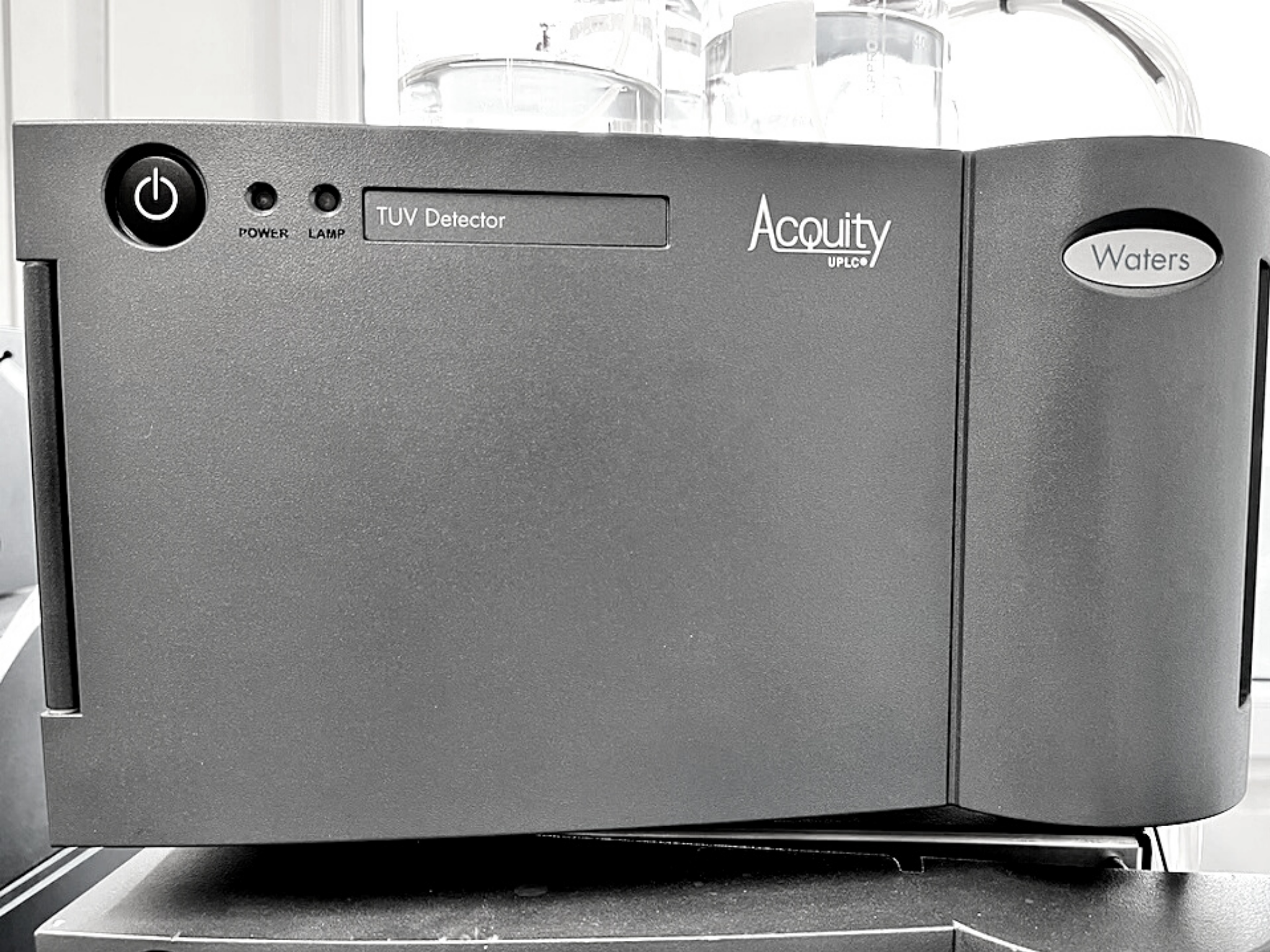The UV, Vis and DAD detectors are classified as light absorption detectors. The UV-Vis detector is as widely used in liquid chromatography as the FID detector in gas chromatography.
These are detectors that ensure high sensitivity to light-absorbing compounds. They are easy to handle and provide good stability.
During the analysis, the sample flows through a transparent, colorless quartz cell, known as a flow cell. By absorbing part of the light, the sample changes the intensity of the light observed for the mobile phase (without the analyte) and the sample containing the eluent. By measuring this difference, the concentration of the analyte can be determined. Since absorption of radiation varies with the wavelength used, it is important to choose the correct wavelength for each analyte.
The standard UV-VIS detector allows the user to select only one wavelength in the range from 195 to 700 nm. The most commonly used length is 254 nm.
The main difference between the UV-Vis detector and the DAD is that the DAD collects the entire spectrum simultaneously (in the full range of 195-700). The UV and VIS detectors visualize the obtained result in two dimensions (light intensity and time), while the DAD adds a third dimension (wavelength). It is convenient to determine the most appropriate wavelength without having to repeat the analyzes.

